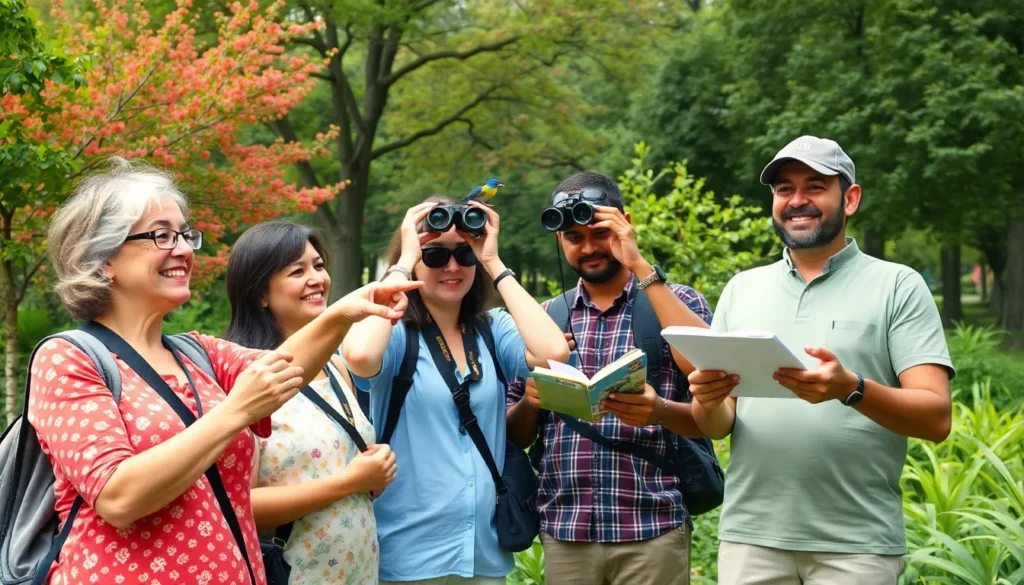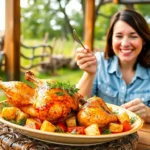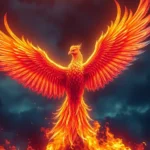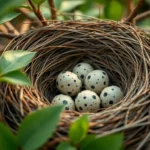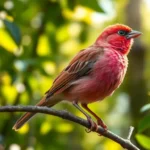We’ve all experienced that magical moment when a flash of colorful feathers catches our eye in the backyard or during a nature walk. But how many times have we found ourselves wondering “What bird was that?” while scrambling for answers. Bird identification doesn’t have to remain a mystery that leaves us frustrated and curious.
Learning to identify birds transforms every outdoor experience into an exciting discovery adventure. Whether you’re spotting a vibrant cardinal at your feeder or catching a glimpse of an elusive warbler during migration season we’ll help you develop the skills to confidently name the birds around you.
The secret lies in knowing what to look for and having the right tools at your disposal. From understanding key field marks to using modern apps and traditional field guides we’ll guide you through proven techniques that turn beginners into confident birders who can identify species with ease.
Essential Tools for Bird Identification
Successful bird identification depends on having the right tools and resources at your disposal. We’ve compiled the most effective equipment and resources that transform challenging bird watching encounters into confident identifications.
Field Guides and Identification Books
Field guides remain the cornerstone of accurate bird identification for both beginners and experienced birders. The Sibley Guide to Birds covers 810 North American species with detailed illustrations showing seasonal variations and flight patterns. Peterson Field Guide to Birds of North America features the classic arrow system pointing to distinguishing field marks on 1,023 species. Regional guides like Birds of Texas or Birds of California provide focused coverage with 300-400 local species including habitat preferences and migration timing.
Physical field guides offer several advantages including battery independence, quick page flipping capabilities, and side-by-side species comparisons. Quality guides include range maps showing breeding territories, wintering grounds, and migration routes. Illustration quality varies significantly between publishers, with hand-painted artwork typically providing more accurate color representation than photographs.
Binoculars and Optical Equipment
Binoculars serve as the primary optical tool for bird identification, bringing distant subjects into clear view for detailed observation. We recommend 8×42 binoculars as the optimal choice for most birders, providing 8 times magnification with 42mm objective lenses that gather sufficient light. Popular models include the Nikon Monarch 7 ($350), Vortex Viper HD ($500), and Zeiss Conquest HD ($700).
Key specifications impact field performance significantly. Exit pupil diameter should measure 4-5mm for comfortable viewing in various lighting conditions. Close focus distance under 6 feet allows detailed observation of nearby birds. Eye relief of 15-18mm accommodates eyeglass wearers comfortably. Weight considerations matter during extended birding sessions, with most quality binoculars weighing 20-28 ounces.
Spotting scopes provide higher magnification (20-60x) for distant waterfowl identification and detailed plumage examination. Compact scopes like the Vortex Razor HD 11-33×50 offer portability for hiking birders. Full-size scopes such as the Swarovski ATX 25-60×85 deliver superior image quality for serious bird study.
Mobile Apps and Digital Resources
Digital bird identification tools have revolutionized field birding through instant access to sounds, images, and identification assistance. eBird by Cornell Lab serves as the industry’s largest biodiversity citizen science project, allowing birders to record sightings while accessing real-time local bird reports. The platform contains over 1 billion bird observations from 290 countries.
Merlin Bird ID provides artificial intelligence-powered identification through photo recognition, sound identification, and guided questioning systems. Users can upload bird photos for automatic species suggestions or record bird songs for acoustic matching. The app works offline after downloading regional bird packs containing 500-800 local species.
BirdNET analyzes recorded bird sounds using machine learning algorithms trained on millions of audio samples. The app identifies over 3,000 bird species globally with 85% accuracy for clear recordings. iNaturalist connects birders with expert identifiers who confirm challenging species observations through community verification.
Sound libraries prove invaluable for learning bird vocalizations. The Macaulay Library contains 175,000 bird sound recordings covering 9,000 species worldwide. Apps like BirdsEye provide real-time rare bird alerts based on location and recent sightings within customizable radius settings.
Key Physical Characteristics to Observe
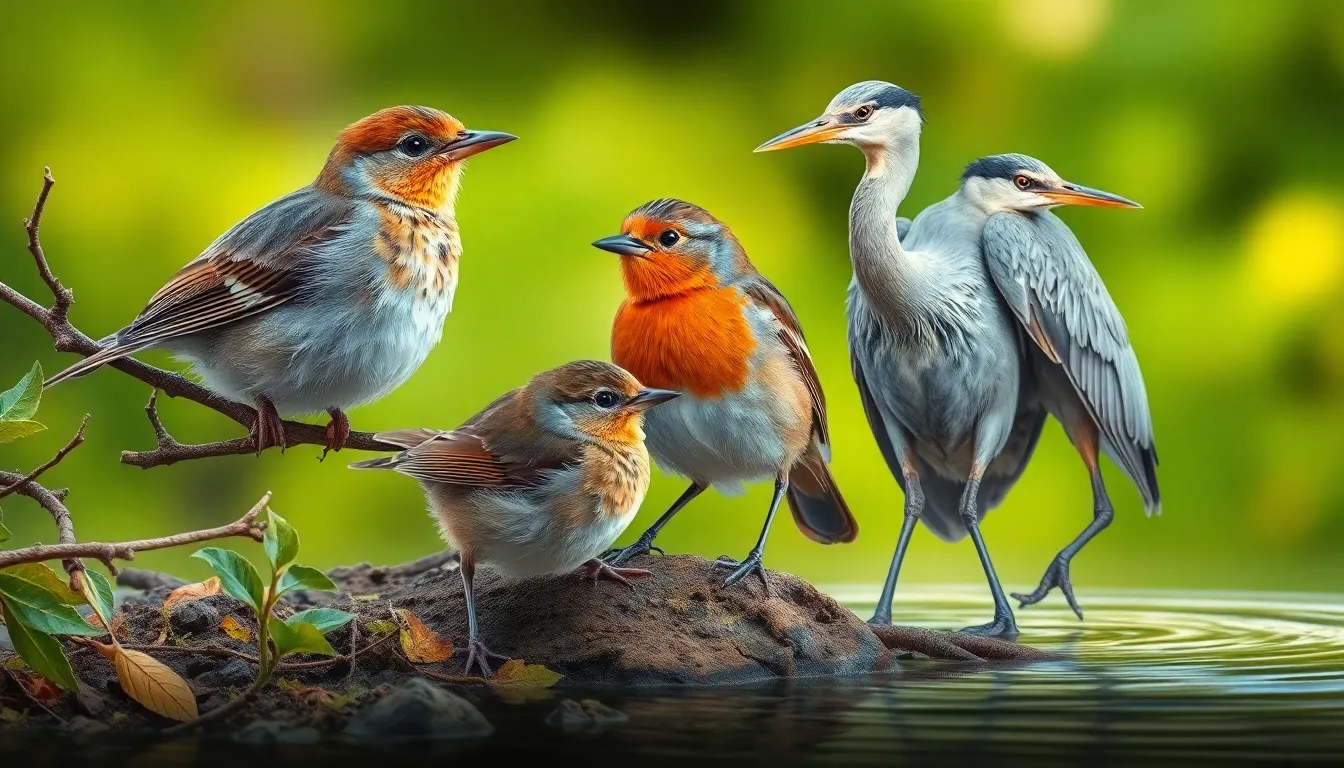
Bird identification relies heavily on observing distinct physical features that distinguish one species from another. We examine four primary characteristics that provide the most reliable identification markers in the field.
Size and Body Shape
Size serves as our first identification clue when spotting an unfamiliar bird. We compare birds to common reference species like sparrows (small), robins (medium), and crows (large) to establish relative proportions. Body shape reveals feeding habits and habitat preferences through evolutionary adaptations.
Compact builds characterize seed-eating birds like finches and cardinals. Streamlined profiles identify aerial hunters such as swallows and flycatchers. Long-legged wading birds like herons display elongated necks and bodies for fishing in shallow water. Stocky frames distinguish ground-foraging species including thrushes and towhees.
Proportional relationships between head size and body mass help separate similar species. Large heads relative to body size typically indicate insect-eating specialists. Small heads on robust bodies suggest seed and fruit consumers.
Bill Shape and Color
Bill morphology directly correlates with feeding strategies and food sources. We observe bill length, thickness, curvature, and tip shape to narrow identification possibilities. Seed crackers possess thick, conical bills designed for crushing hard shells.
Nectar feeders display thin, curved bills that reach deep into flower tubes. Fish-eating birds feature pointed, spear-like bills for capturing aquatic prey. Insect gleaners show fine, tweezer-like bills perfect for plucking small invertebrates from bark crevices.
Bill coloration changes seasonally in many species, particularly during breeding periods. Bright orange, red, or yellow bills often indicate reproductive readiness. Dark bills typically appear during non-breeding seasons. Age-related color variations help distinguish juveniles from mature adults.
Wing Patterns and Flight Style
Wing markings provide distinctive identification features visible both at rest and in flight. We look for wing bars, patches, and contrasting colors that create unique patterns. White wing patches distinguish many blackbirds and starlings from similar dark species.
Flight patterns reveal hunting strategies and habitat preferences. Undulating flight characterizes woodpeckers and finches through alternating flapping and gliding sequences. Steady, direct flight identifies raptors and waterfowl covering long distances efficiently. Erratic, darting movements indicate insect-catching specialists like flycatchers and swallows.
Wing shape affects flight capabilities and foraging behaviors. Broad wings support soaring species that ride thermal currents. Narrow, pointed wings enable rapid acceleration in pursuit predators. Short, rounded wings help maneuvering through dense vegetation.
Leg Color and Length
Leg characteristics reflect habitat preferences and foraging behaviors across bird families. We observe leg color, length, and toe configuration to support species identification. Bright yellow legs distinguish many vireos and warblers from similar forest species.
Red or orange legs identify several thrush and flycatcher species during breeding seasons. Black legs remain consistent year-round in crows, ravens, and many shorebird species. Pink legs characterize many gull and tern species along coastal environments.
Leg proportions indicate foraging strategies and preferred habitats. Long legs enable wading birds to venture into deeper water while maintaining balance. Short legs suit ground-dwelling species that hop or run across terrestrial surfaces. Webbed feet identify swimming specialists adapted for aquatic environments.
Understanding Bird Behavior and Habitat

Bird identification becomes significantly more accurate when we observe behavioral patterns alongside physical characteristics. Habitat preferences and seasonal behaviors provide crucial context clues that complement the field marks we’ve already examined.
Feeding Patterns and Diet
Understanding how birds feed reveals their ecological role and helps narrow identification possibilities. Different feeding strategies create distinct behavioral signatures that experienced birders recognize instantly.
Ground foragers like American Robins hop across lawns searching for earthworms while scratching through leaf litter with both feet. Sparrows and juncos exhibit similar ground feeding but focus on seeds rather than invertebrates. These species typically feed in short bursts with frequent head lifting to scan for predators.
Aerial insectivores such as swallows and flycatchers display completely different feeding behaviors. Barn Swallows catch insects during continuous flight with open mouths while Tree Swallows perform acrobatic maneuvers to capture prey. Flycatchers prefer stationary perches and dart out to snatch insects before returning to the same spot.
Nectar feeders create feeding territories around flower patches or feeders. Hummingbirds hover at blossoms for 3-5 seconds per flower while orioles and some warblers adopt more deliberate perching positions when accessing nectar sources.
| Feeding Strategy | Example Species | Key Behaviors |
|---|---|---|
| Ground Foraging | American Robin, House Sparrow | Hopping, scratching, head lifting |
| Aerial Hunting | Barn Swallow, Eastern Kingbird | Continuous flight, perch darting |
| Nectar Feeding | Ruby-throated Hummingbird, Baltimore Oriole | Hovering, territorial defense |
| Bark Gleaning | White-breasted Nuthatch, Brown Creeper | Spiraling, probing, hanging inverted |
Nesting and Breeding Behaviors
Breeding behaviors offer seasonal identification opportunities that extend beyond plumage changes. Territorial displays and nesting site selection create predictable patterns for many species.
Courtship displays vary dramatically between families. Male Red-winged Blackbirds spread their wings to expose bright shoulder patches while defending marsh territories. Northern Cardinals perform feeding rituals where males offer seeds to potential mates. Woodpeckers drum on resonant surfaces to establish territories and attract mates during March through May.
Nesting locations reflect exact habitat requirements. Cavity nesters like chickadees and nuthatches excavate holes in dead wood or occupy existing cavities. Cup nesters such as robins and cardinals build open structures in tree forks typically 4-15 feet above ground. Ground nesters including some sparrows and towhees construct concealed nests in dense vegetation.
Parental care patterns distinguish species families. Altricial species like songbirds feed helpless nestlings for 12-18 days after hatching. Precocial species such as ducks and quail lead mobile young to food sources within hours of hatching. Both parents participate in feeding for most songbird species while females handle primary incubation duties.
Preferred Habitats and Seasonal Movements
Habitat associations provide the strongest predictive factor for bird identification in exact locations. Understanding these preferences helps birders know which species to expect in particular environments.
Forest habitats support different species at various levels. Canopy dwellers like warblers and vireos remain 30-60 feet above ground while understory species including thrushes and some flycatchers occupy the 6-20 foot range. Ground level species such as ovenbirds and some sparrows rarely venture above dense vegetation.
Wetland environments attract waterfowl and wading birds with exact depth preferences. Dabbling ducks like Mallards and Northern Pintails feed in water depths of 12-24 inches while diving ducks prefer deeper areas exceeding 6 feet. Shorebirds segregate by bill length with shorter billed species feeding closer to shorelines.
Edge habitats where different environments meet support the highest bird diversity. Forest edges provide nesting sites for species requiring both open foraging areas and protective cover. Agricultural edges attract seed eating species while maintaining predator escape routes into adjacent woodlands.
Migration timing follows predictable patterns for most North American species. Spring migration occurs March through May with earlier arrivals including waterfowl and later species like flycatchers. Fall migration extends August through October with juveniles often appearing before adults of the same species.
| Habitat Type | Common Species | Peak Activity Times |
|---|---|---|
| Deciduous Forest | Wood Thrush, Scarlet Tanager | Dawn, dusk |
| Grasslands | Bobolink, Eastern Meadowlark | Mid-morning |
| Wetlands | Great Blue Heron, Red-winged Blackbird | All day |
| Suburban Areas | American Robin, Northern Cardinal | Dawn, evening |
Common Bird Families and Their Features
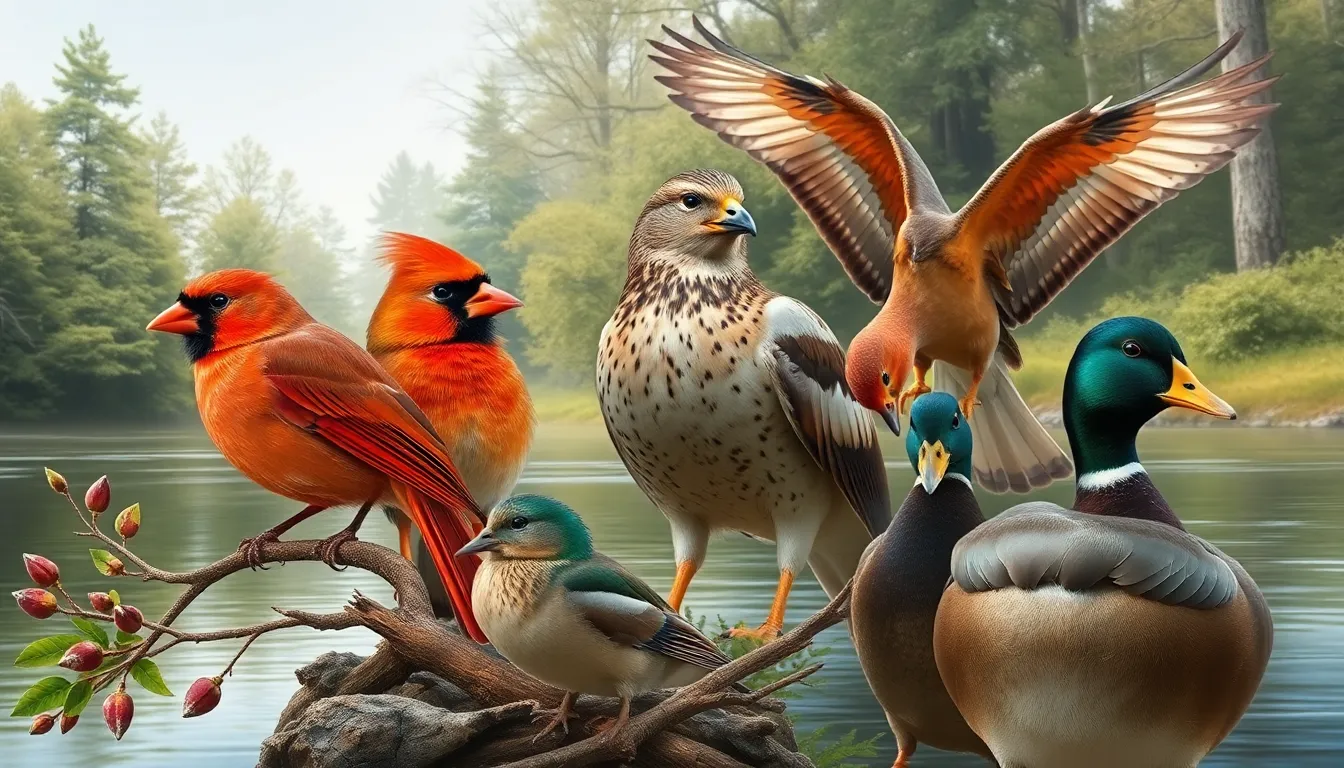
Understanding bird families simplifies identification by grouping species with similar traits and behaviors. Each family shares distinctive characteristics that make recognition patterns more predictable once you learn their key features.
Songbirds and Perching Birds
Songbirds represent the largest bird family, comprising over 4,000 species worldwide with remarkable diversity in size and appearance. These birds possess three forward-facing toes and one backward-facing toe, creating a powerful grip for perching on branches and wires. Their bills vary dramatically based on diet: finches display thick seed-cracking bills, warblers show thin insect-catching bills, and thrushes feature medium-sized versatile bills for mixed diets.
Most songbirds measure between 3-12 inches in length, with common examples including robins, cardinals, wrens, and sparrows. Males typically exhibit brighter plumage during breeding season, while females often display more subdued colors for nest protection. Behavioral patterns include territorial singing from prominent perches, ground hopping or branch hopping for foraging, and formation of mixed-species flocks during migration periods.
Key identification features focus on bill shape, tail length, wing bars, and distinctive markings like eye rings or breast streaks. Habitat preferences range from dense forests for warblers to open fields for meadowlarks, making location a valuable identification clue.
Raptors and Birds of Prey
Raptors possess specialized hunting adaptations including sharp curved talons, hooked bills, and exceptional eyesight that’s 4-8 times stronger than human vision. We divide raptors into distinct categories: hawks and eagles for daytime hunting, owls for nocturnal hunting, and falcons for high-speed aerial pursuits.
Size ranges vary dramatically within raptor families, from the 5-inch American Kestrel to the massive California Condor with its 10-foot wingspan. Flight patterns provide excellent identification markers: hawks soar in wide circles using thermal currents, falcons demonstrate rapid wingbeats with occasional glides, and eagles maintain steady soaring with minimal wing movement.
Distinctive features include feather patterns on wings and tails, head shapes varying from rounded owl heads to streamlined falcon profiles, and hunting behaviors such as perch hunting versus active pursuit. Common species like Red-tailed Hawks display light-colored tail feathers, while Cooper’s Hawks show distinctive rounded wings and long tails for forest navigation.
Seasonal movements concentrate raptors along mountain ridges and coastlines during migration, creating excellent identification opportunities at hawk watches and migration corridors.
Waterfowl and Shorebirds
Waterfowl families include ducks, geese, and swans, all featuring waterproof plumage and webbed feet for swimming efficiency. Duck species divide into categories based on feeding strategies: dabblers like Mallards feed at the surface, divers like Canvasbacks submerge completely, and mergansers possess serrated bills for catching fish.
Size differences help distinguish waterfowl groups, with swans measuring 4-5 feet in length, geese ranging 2-3 feet, and ducks typically spanning 12-24 inches. Male ducks display brilliant breeding plumage from late fall through spring, while females maintain camouflaged brown patterns year-round.
Shorebirds present greater identification challenges due to their similar brown and gray coloration and diverse bill adaptations. Bill length and shape indicate feeding strategies: sandpipers probe soft mud with long bills, plovers pick surface prey with short bills, and turnstones use wedge-shaped bills for flipping stones.
Migration timing creates seasonal abundance patterns, with peak shorebird numbers occurring during spring (April-May) and fall (July-September) passages. Habitat preferences distinguish species further: yellowlegs prefer freshwater edges, sanderlings favor sandy beaches, and dunlin concentrate on mudflats during low tide periods.
Leg color, bill curvature, and size comparisons using reference birds like Least Sandpipers (sparrow-sized) versus Greater Yellowlegs (robin-sized) provide reliable identification anchors for challenging shorebird encounters.
Seasonal Considerations for Bird Identification
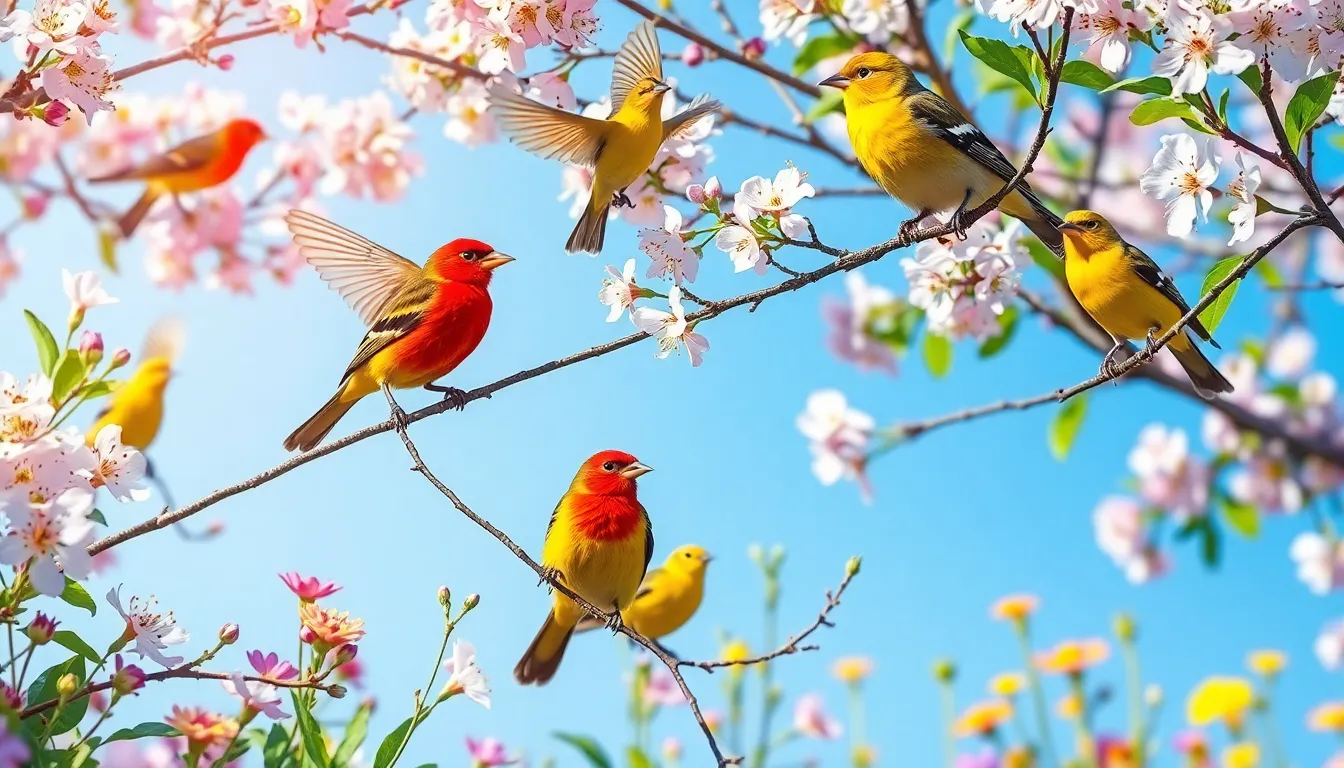
Bird identification challenges shift dramatically throughout the year as species change their appearance, behavior, and locations. Understanding these seasonal patterns transforms our ability to accurately identify birds across different times of the year.
Spring Migration Patterns
Spring migration creates exceptional opportunities for bird identification as species travel through diverse habitats between February and May. Warblers, vireos, and thrushes appear in mixed flocks during peak migration periods in April and early May, often displaying transitional plumages that combine winter and breeding characteristics.
Timing varies by species and geographic location, with early migrants like red-winged blackbirds arriving in March while late migrants such as Canada warblers appear in mid-May. Weather patterns significantly influence migration timing, with warm fronts accelerating movement and cold fronts concentrating birds in favorable locations.
Migration routes funnel species through exact corridors, creating hotspots where we can observe uncommon birds outside their typical breeding ranges. Coastal areas, river valleys, and mountain passes concentrate migrants, offering identification opportunities for species that rarely appear during other seasons.
Summer Breeding Plumage
Breeding season transforms bird appearance as males develop their most vibrant colors and distinctive patterns between April and August. Male scarlet tanagers display brilliant red bodies with black wings, while non-breeding males show yellow-green coloration that resembles females. Wood ducks exhibit iridescent green heads and white facial stripes during breeding season, contrasting sharply with their muted eclipse plumage.
Plumage timing varies among species, with early nesters like northern cardinals maintaining bright colors from February through September. Late nesters such as American goldfinches don’t achieve peak breeding colors until June, coinciding with their delayed nesting cycle.
Behavioral changes accompany plumage shifts as territorial males sing frequently and engage in courtship displays. These vocalizations and actions provide additional identification markers during breeding season, particularly for species with subtle visual differences between sexes.
Fall and Winter Variations
Fall brings dramatic plumage changes as birds molt into winter appearances between August and November. Many species lose their breeding colors, with males resembling females or juveniles in subdued tones. American goldfinches transition from bright yellow to olive-brown, while male red-winged blackbirds develop streaky brown edges on their shoulder patches.
Juvenile birds complicate fall identification as they display intermediate plumages that combine adult and immature characteristics. First-year hawks show variable plumages that differ significantly from adults, requiring careful examination of exact field marks like tail patterns and wing shapes.
Winter adaptations create identification opportunities through behavioral changes and habitat shifts. Species form mixed feeding flocks, with chickadees, nuthatches, and woodpeckers traveling together through winter territories. Northern finches like pine siskins and redpolls appear irregularly during irruption years, creating unpredictable identification challenges in areas where they’re typically absent.
Seasonal abundance patterns affect identification probability, with some species becoming locally common during exact months while remaining rare throughout the rest of the year.
Tips for Beginner Bird Watchers

Starting your bird identification journey becomes easier when you understand the optimal conditions and approach. These practical strategies help new birders develop confidence and skills while enjoying the outdoors.
Best Times and Locations for Birding
Dawn and dusk offer the most active bird identification opportunities. Birds engage in peak feeding behaviors between 5:30 AM and 9:00 AM during spring and summer months. Evening activity increases from 5:00 PM to 7:30 PM when many species return to roosting areas.
Local parks and nature reserves provide excellent starting locations for beginner bird watchers. Urban parks attract 15-30 common species including robins, cardinals, and blue jays. Woodland edges yield higher bird diversity with 40-60 species during peak migration periods.
Water sources concentrate bird activity throughout the day. Ponds, streams, and wetlands attract waterfowl, waders, and songbirds seeking drinking and bathing opportunities. These locations offer consistent identification practice for beginners learning different bird families.
Weather conditions significantly impact bird behavior and visibility. Clear mornings after rain systems bring increased activity as birds resume foraging. Overcast days reduce harsh shadows and provide better lighting for observing field marks and plumage details.
Building Your Identification Skills
Practice begins with focusing on one bird at a time rather than attempting to identify entire flocks. Observe size comparison using familiar reference birds like robins or crows. Note body proportions, bill shape, and leg length before the bird moves or flies away.
Record your observations immediately using field notebooks or smartphone apps. Write down key features including overall size, distinctive markings, and behavior patterns. Documentation helps reinforce learning and provides reference material for future identification challenges.
Start identification practice with common backyard species before progressing to more challenging birds. Master 10-15 local species including house sparrows, mourning doves, and red-winged blackbirds. Build confidence with these familiar birds before attempting rarer or more similar species.
Photography supports learning when used appropriately without disturbing birds. Take reference photos of distinctive features like wing bars, tail patterns, and bill shapes. Review images later to confirm identifications and study subtle field marks missed during initial observations.
Patience develops accurate identification skills more effectively than rushing through multiple sightings. Spend 5-10 minutes observing each bird rather than quickly scanning for new species. Thorough observation of fewer birds builds stronger identification foundations than brief glimpses of many species.
Joining Birding Communities and Groups
Local Audubon chapters offer beginner-friendly bird walks and identification workshops. These groups provide experienced guides who share knowledge about regional species and hotspots. Monthly field trips introduce new locations and seasonal bird patterns.
eBird online platform connects bird watchers globally while tracking personal observations. Submit daily checklists to contribute citizen science data and access community sightings. Review other birders’ reports to learn about species timing and locations in your area.
Social media groups and forums provide immediate identification assistance from experienced birders. Facebook groups like “What’s That Bird?” offer photo-based identification help within hours. Reddit communities such as r/whatsthisbird connect beginners with knowledgeable volunteers worldwide.
Birding festivals and events offer intensive learning opportunities with expert guides and vendors. Annual events feature workshops, field trips, and equipment demonstrations. These gatherings provide networking opportunities with local birding mentors and enthusiasts.
Mentorship accelerates learning through direct guidance from experienced bird watchers. Many clubs pair beginners with seasoned birders for personalized instruction. One-on-one guidance helps develop field skills and confidence more rapidly than solo practice.
Conclusion
Bird identification opens doors to a deeper connection with nature that enriches every outdoor moment. We’ve equipped you with the essential tools knowledge and techniques to transform from curious observer to confident birder.
The journey from beginner to skilled bird identifier doesn’t happen overnight but every species you learn adds to your growing expertise. Whether you’re using modern apps or traditional field guides the key lies in consistent practice and patient observation.
Start with the common birds in your area and gradually expand your identification skills. Remember that every experienced birder once stood where you are now wondering about that mysterious bird in the tree. Your birding adventure begins with that first successful identification and grows into a lifelong passion for our feathered friends.
Frequently Asked Questions
What are the essential tools needed for bird identification?
The most important tools for bird identification include field guides (like the Sibley Guide to Birds), binoculars (preferably 8×42), and mobile apps such as Merlin Bird ID or eBird. Field guides provide detailed illustrations and species information, while binoculars help you observe birds clearly from a distance. Modern apps offer instant access to sounds, images, and identification assistance.
What physical characteristics should I look for when identifying birds?
Focus on four key traits: size and body shape, bill shape and color, wing patterns and flight style, and leg color and length. Size helps compare unfamiliar birds to known species, while bill shape indicates feeding habits. Wing markings and flight patterns provide distinctive identification features, and leg characteristics reflect foraging behaviors and habitat preferences.
How does bird behavior help with identification?
Bird behavior provides crucial identification clues through feeding patterns, nesting behaviors, and habitat preferences. Different species have unique feeding strategies, territorial displays, and activity levels. Understanding these behaviors helps you anticipate which species to expect in specific environments and distinguishes between similar-looking birds based on their actions.
What are the main bird families beginners should learn?
The three primary bird families to start with are songbirds (perching birds with melodic calls), raptors (birds of prey with hooked bills and sharp talons), and waterfowl (swimming birds with webbed feet). Learning these families simplifies identification by grouping species with similar traits, behaviors, and habitats together.
How do seasonal changes affect bird identification?
Seasonal changes significantly impact bird identification as species alter their appearance, behavior, and locations throughout the year. Spring brings migration and breeding plumage, summer shows peak breeding colors, while fall and winter feature duller plumage and different species distributions. Understanding these patterns helps birders adapt their identification strategies accordingly.
When is the best time to go birdwatching?
The optimal times for birdwatching are dawn and dusk when birds are most active. Early morning (first 2-3 hours after sunrise) is particularly productive as birds are actively feeding and singing. Weather conditions also matter – calm, clear days typically offer better viewing opportunities than windy or stormy conditions.
What mobile apps are most helpful for bird identification?
The top mobile apps for bird identification include Merlin Bird ID (offers photo, sound, and eBird integration), eBird (for recording observations and finding local species), and BirdNET (for real-time sound identification). These apps provide instant access to bird sounds, images, range maps, and allow you to connect with the global birding community.
How can beginners improve their bird identification skills?
Start with common local species and gradually build your knowledge. Practice patient observation, focusing on one bird at a time. Join local birding groups or Audubon chapters for mentorship opportunities. Use field guides alongside mobile apps, and maintain a birding journal to track your observations and learning progress.

